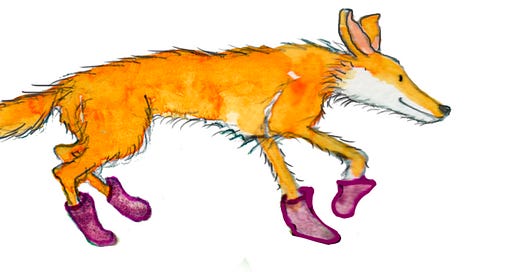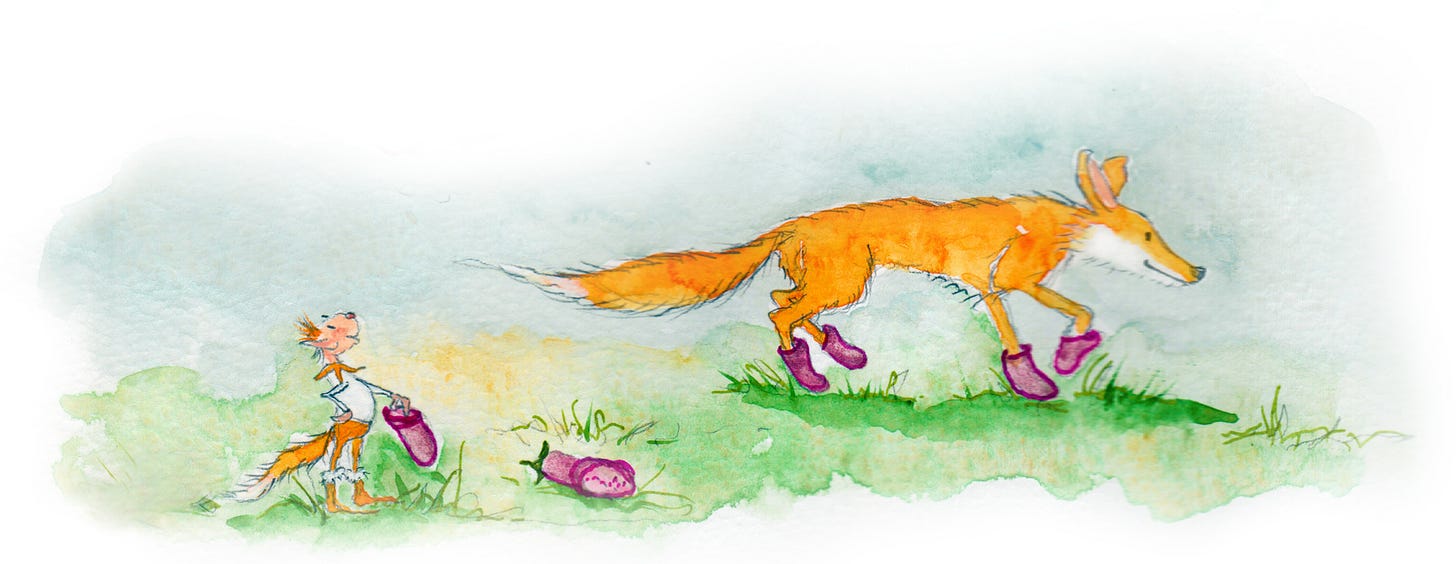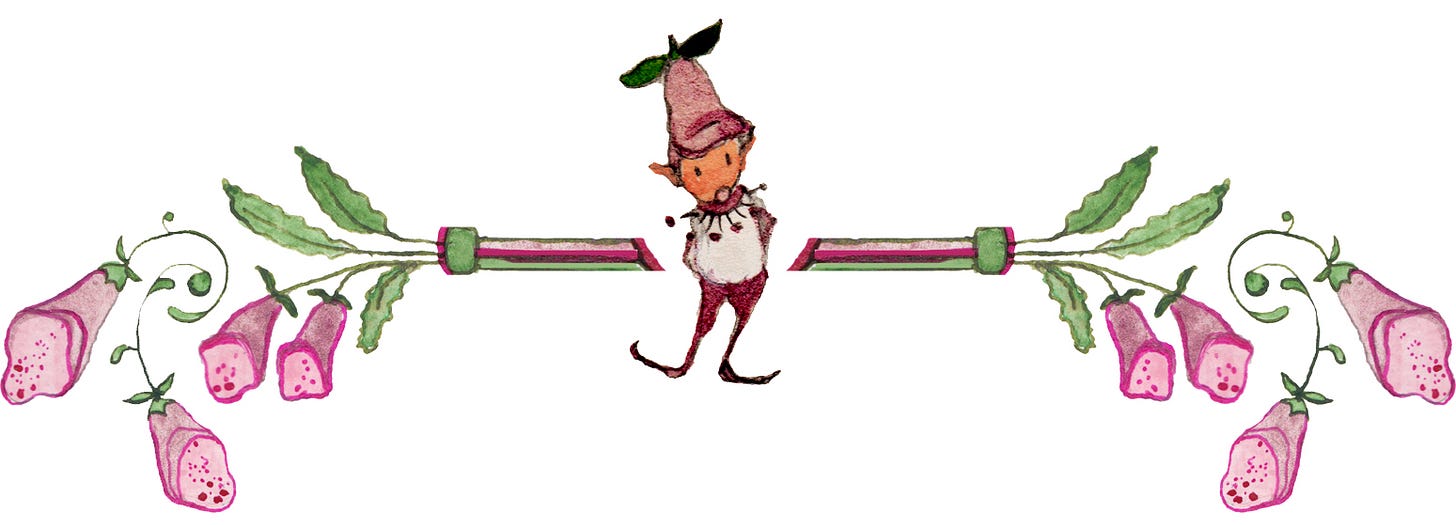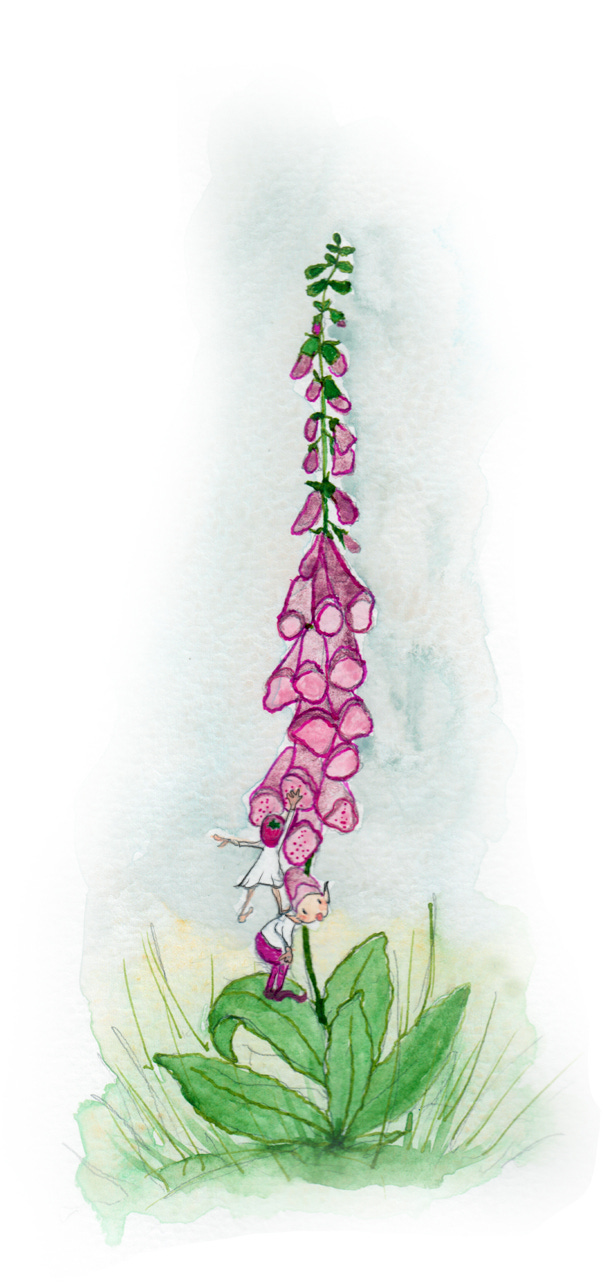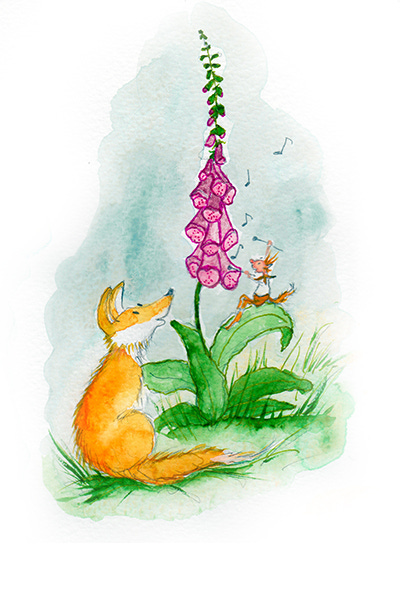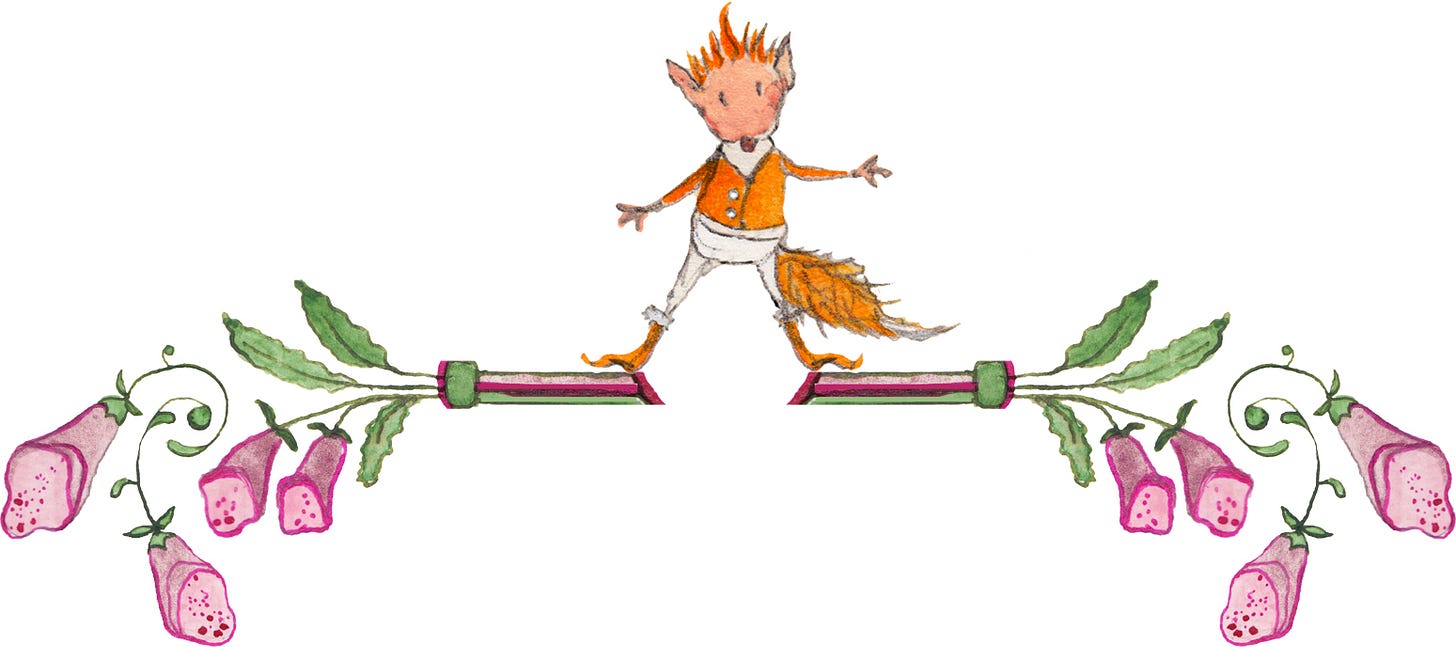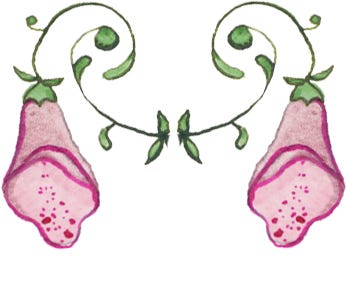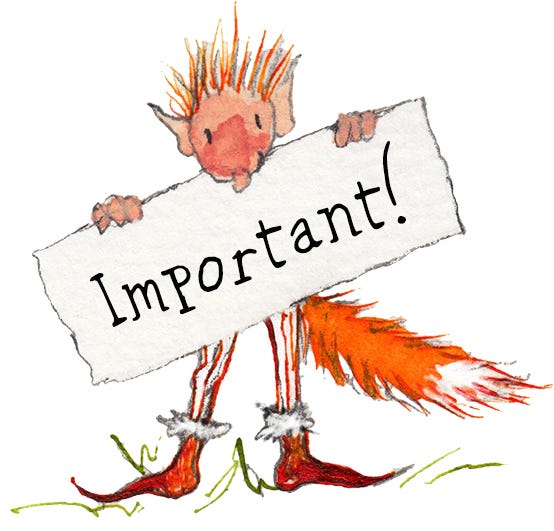During the Dark Ages (500-1066) there was a strong connection between the Foxglove and the good and wycked folk (good and bad fairies). Back then people believed that the wycked folk helped foxes put the Foxglove flowers on their toes so no one could hear them slinking around to catch their prey.
Foxesglafa or Foxesglofa, was the Old English word for Foxglove, which literally meant fox's glove.
During the Dark Ages people also believed that the good folk printed the dots inside the Foxglove flowers by pushing their fingertips inside the bells and that these purple dots are the fairies' warning to everyone that the plant is very poisonous. This is why some of the other names it has, remind us of the good fairies' work: Fairy's Glove, Fairy Caps, Folk's Glove and Fairy Thimbles.
There is a third theory about how it came to be called Foxglove. Some think that the name comes from the word foxes-gleow (gleow is Old English for glee and music) and that this came into the English language via the Vikings-fox music, made by the Foxgloves' bells.
The link with Vikings is that the only other country where the plant is linked to foxes and fairies is Norway, where some of the Vikings came from. In Norway, the word revbjelle means fox-bell.
But the names don't stop there!
Another old word for Foxglove is Witch's Glove, because it was believed that witches liked to decorate their fingers with the poisonous flowers for dancing around the forest. In Ireland it has yet another name: Dead Man's Thimbles. This name came about as all parts of the plant are super poisonous.
Interestingly, many plants that are toxic to us (like deadly toxic) have been used in medicine. In the case of Foxglove, doctors have been using it to help people with heart trouble since the late 1700's.
The word foxglove was first recorded in the 14th century in a list of plants drawn up during the reign of Edward III.
Digitalis, the latin name of the foxglove, means vinger glove or hand glove.
This newsletter is NOT a field guide for flower identification. It’s often difficult to tell the difference between harmless plants and poisonous plants and some flowers are rare and protected by law, so, NEVER pick or use any plants or flowers if you’re not sure about them.
illustrations and text ©Chantal Bourgonje


